By Yindi Chen
February 2024

Installation view of Ted Gahl, Dustin Hodges, Gabriel Mills, Anna Ting Möller, Soumya Netrabile, Kaifan Wang (January 17-February 21, 2024) at Alexander Berggruen, NY.
In Emil Cioran’s book The Fall into Time, the philosopher contemplates time—an intangible and uncontrollable force that endlessly eludes one’s grasp: “Defenseless, with no hold on things, we then face a peculiar misfortune: that of not being entitled to time.”(1) Written in the 60s, Cioran’s statement still resonates with the constantly accelerated pace of life. Though the attempt to clutch time often seems futile, artists grapple with how to depict the changing nature of time. They do so by not solely focusing on the present, but by contemplating the passage and flux of time, giving form to its altering conditions and turning life’s brevity and lightness into the gravity of materiality. In the works by Ted Gahl, Dustin Hodges, Gabriel Mills, Anna Ting Möller, Soumya Netrabile, and Kaifan Wang, paintings and sculptures act as time-based media, carrying the potential for myriad transformations that emerge in process, motion, and every unidentifiable moment.
The conjunction of time and medium is intrinsic to film. Dustin Hodges’s paintings share some qualities of film: a montage of excerpted materials and a feeling of anticipation. In his Diver series, the film strip seems to start rolling. The shape of rocks from Odilon Redon’s painting Butterflies and the silhouette of Francine, a character from the cartoon Arthur, encounter each other in the same pictorial space. Detached from their original sources, the figures continually bounce between different scenes. Paintings become hypothetical films, existing in a collaged timespace.
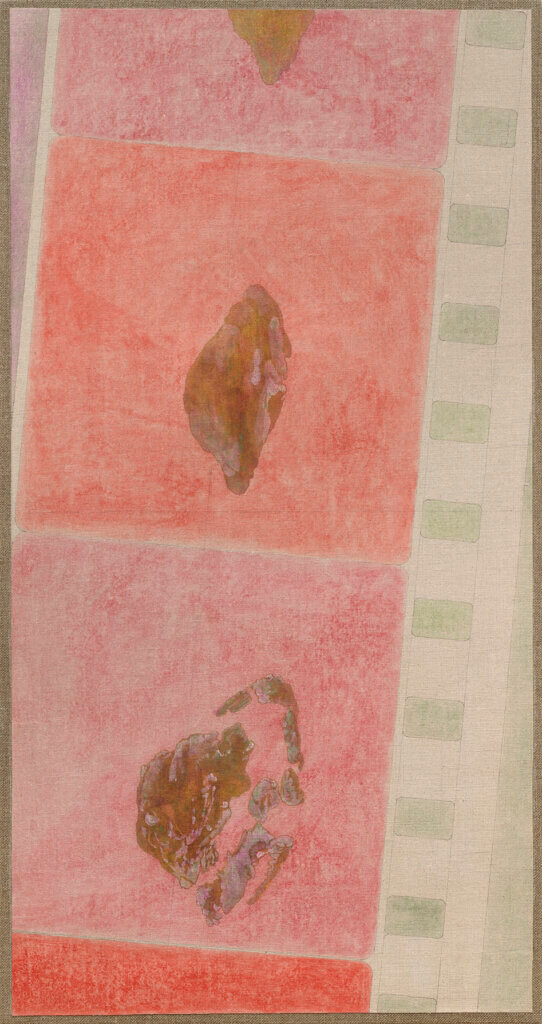
Dustin Hodges
Diver Film Strip, 2022
oil
pencil
distemper
linen
panel
30 1/2 x 16 1/8 in. (77.5 x 41 cm.)
Prior to moving image and new media art, 19th-century Symbolism emphasized the interconnectedness between art and senses—synesthesia. The temporal and the spatial, the bodily and the visual are inseparable; words and shapes might evoke specific moments and enable us to trace fading memories. In Ted Gahl’s paintings, a synesthetic dimension underlies. With loose gestures and misty backgrounds, contours of flowers and trees are blurred; objects, places, and people flash back. Time melts. The tableaux are suffused with emotions and reminiscences. Swaths of paint sometimes block part of the view, diverting one’s attention to mood and aura that are hidden in the paintings or are beyond the frames. The blue, fabric-like motif featured in some of Gahl’s paintings reappear in Despair and Portrait, pointing to a continuity of creation and an extended temporality.
The sense of ongoingness can also be found in Gabriel Mills’s triptychs. The juxtaposed panels are in varied ratios but relational positions, as a sequence of events, dropping hints through color, shape, and seemingly moving brushstrokes. Layered paints thicken the canvas and imbue the painting with a tangible heaviness and physical depth. Some sessions are covered with textured oil; the labyrinthic grains remind a viewer of the corporeality of being. The vibrant blue in Cieja Phantasi resembles pieces of stained glass that reflect the light from the sky as well as recalls Giotto’s use of lapis lazuli. Inspiring contemplation of the heavens, this blue contains Mills’s enduring rumination on eternal life.
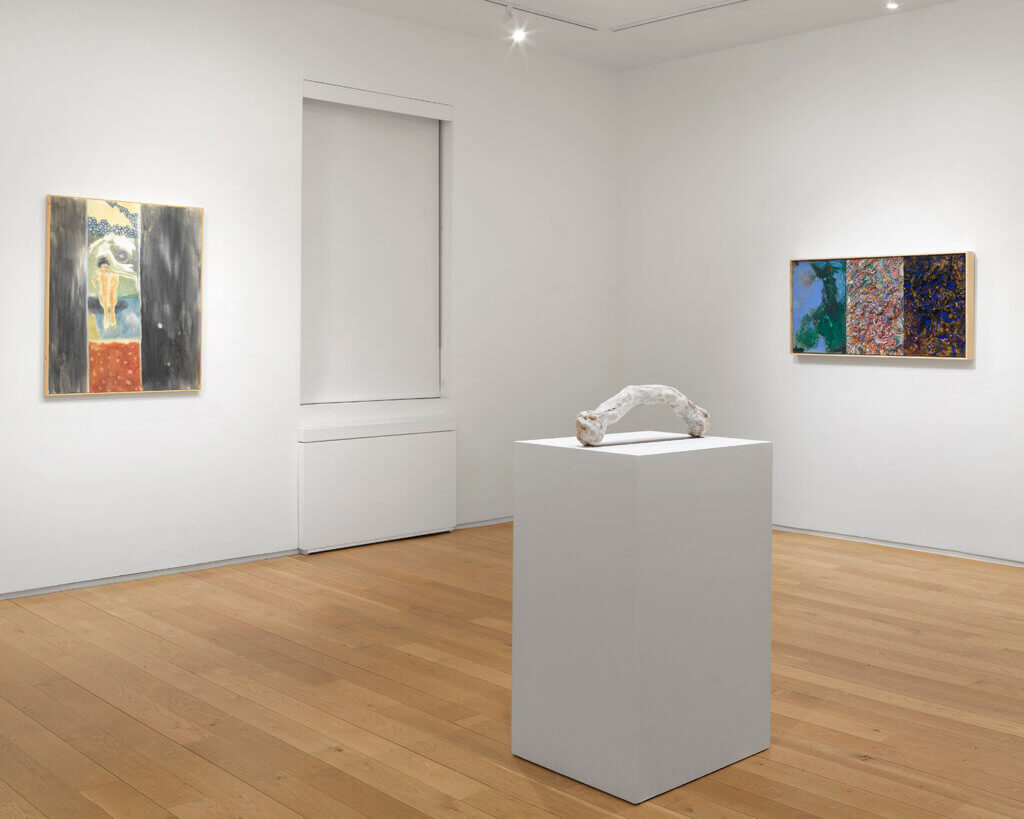
Installation view of Ted Gahl, Dustin Hodges, Gabriel Mills, Anna Ting Möller, Soumya Netrabile, Kaifan Wang (January 17-February 21, 2024) at Alexander Berggruen, NY.
Perhaps eternity exists in nature, of which humans are part but not central to. Soumya Netrabile’s painting depicts a moment that we share with the landscape and nonhuman living beings. In the dusk-toned Night Flies, the forest becomes hazy, and the flaming color is given by the setting sun. Flies hover among branches, humming, observing, catching each wisp of changing light. Netrabile’s perception and imagination of nature are immortalized in a timeless scene, as Emily Dickinson’s portrayal in her poem: “Here is a little forest, Whose leaf is ever green.”(2) Evergreen, a word that implies eternity, resides with growing leaves and reoccurring dawns and dusks.
Plants have their own tenacity—a possibility of continuously nurturing themselves. In Kaifan Wang’s painting, a tumbleweed performs as a metaphor for frequent migrations: the plant’s adaptability to various environments overcomes any resistance against its continual move towards the unknown. The interaction between the plant and wind becomes an analogue of the relation between humans and the environment. Interpreting “uprootedness” as a positive force, Wang delineates his embodied memories and sense of alienation into the brownish marks that stir the memory of sand particles from the desert in the artist’s hometown, Inner Mongolia, China. The invisible but omnipresent wind delivers entangled feelings from diasporic experience.
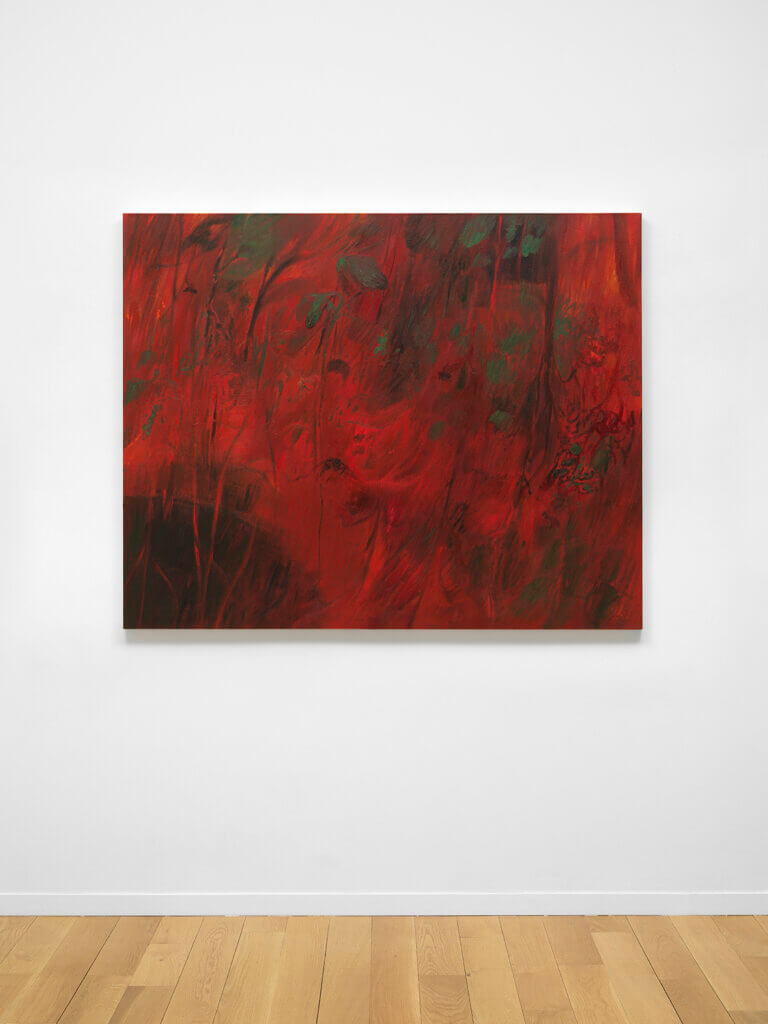
Soumya Netrabile
Night Flies, 2023
oil on canvas
48 x 60 in. (121.9 x 152.4 cm.)
Courtesy of the artist and Anat Ebgi Gallery, Los Angeles.
If Wang codes his perception of the changing environment in twirling lines, Anna Ting Möller invokes the temporal phenomenon in their sculpture material, Kombucha-SCOBY. Cultivated by the artist, the living cultures, like human cells, grow and decay simultaneously. The fleshy “skin” of SCOBY gradually dries and turns into thin, translucent sheets, finally approaching a state of unchanging. With its attunement to the temporalities of haptic and visual variations, Möller’s body of work engages in more-than-human time, embedding histories and personal memories in the sculptural form.
(1) Emil Cioran, The Fall into Time, Quadrangle Books, Chicago, 1970, p. 173.
(2) Emily Dickinson, There is Another Sky, 1850.
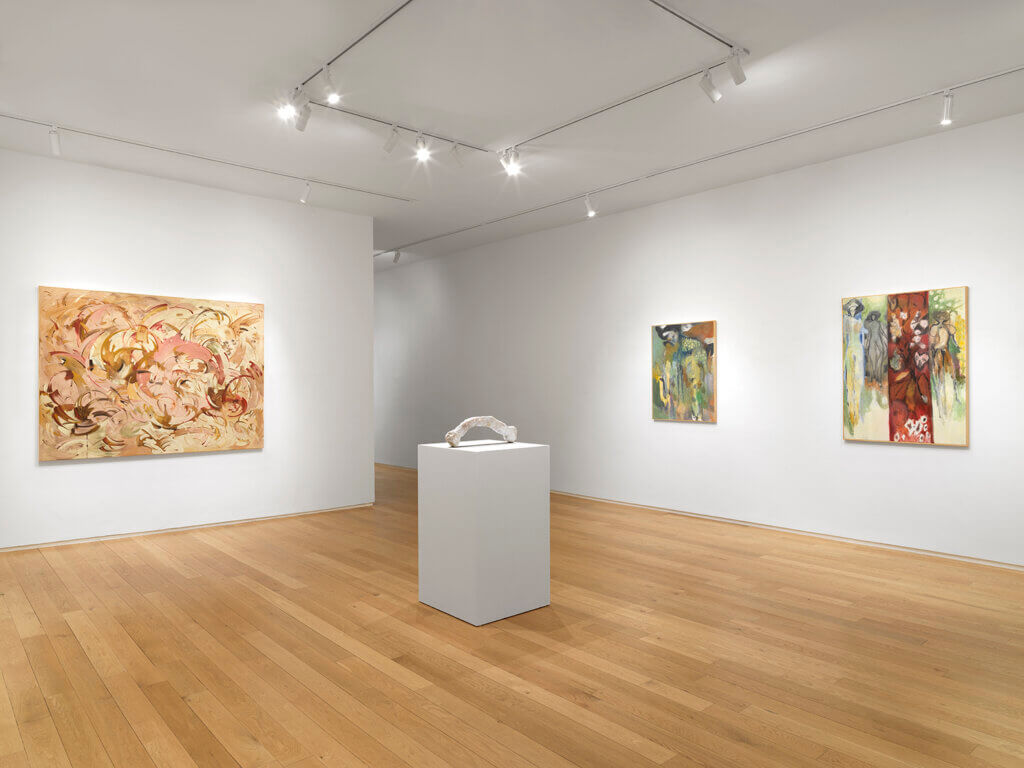
Installation view of Ted Gahl, Dustin Hodges, Gabriel Mills, Anna Ting Möller, Soumya Netrabile, Kaifan Wang (January 17-February 21, 2024) at Alexander Berggruen, NY.
Yindi Chen is a curator and writer based in New York. She has contributed writings to The Art Newspaper China, C-print Journal, and Whitehot Magazine. Chen holds an MA in Curatorial Practice from the School of Visual Arts, New York, and a BA in Curating and Art History from the University of York, UK.
This essay was published on the occasion of Alexander Berggruen‘s exhibition Ted Gahl, Dustin Hodges, Gabriel Mills, Anna Ting Möller, Soumya Netrabile, Kaifan Wang (January 17-February 21, 2024).
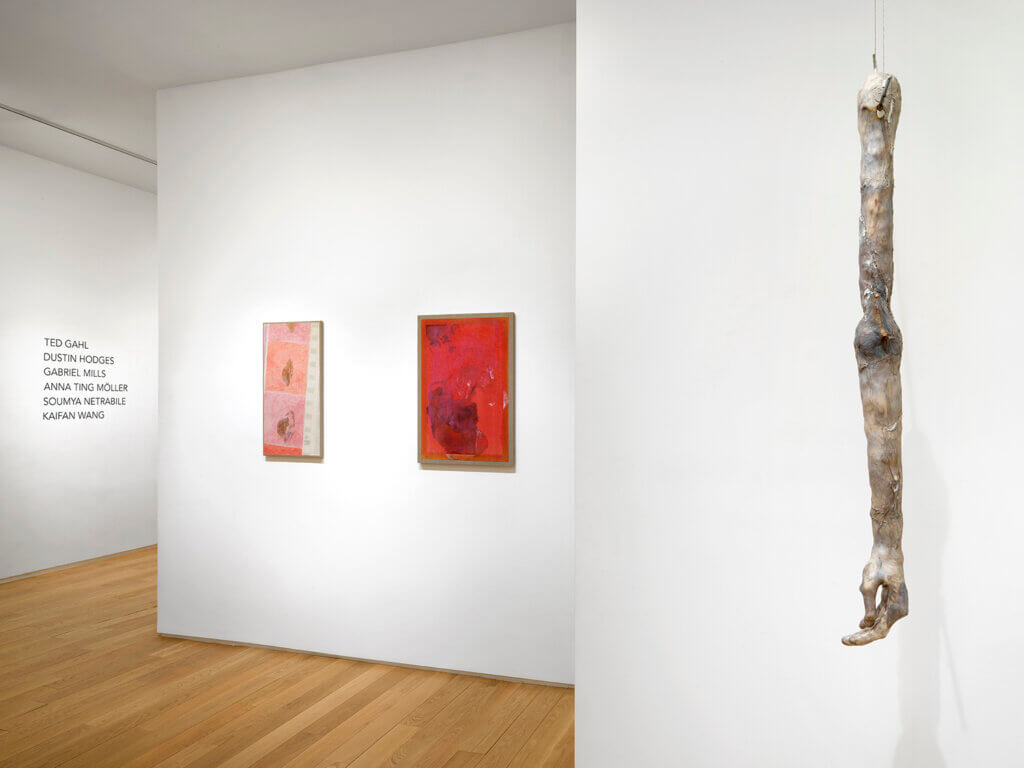
Installation view of Ted Gahl, Dustin Hodges, Gabriel Mills, Anna Ting Möller, Soumya Netrabile, Kaifan Wang (January 17-February 21, 2024) at Alexander Berggruen, NY.